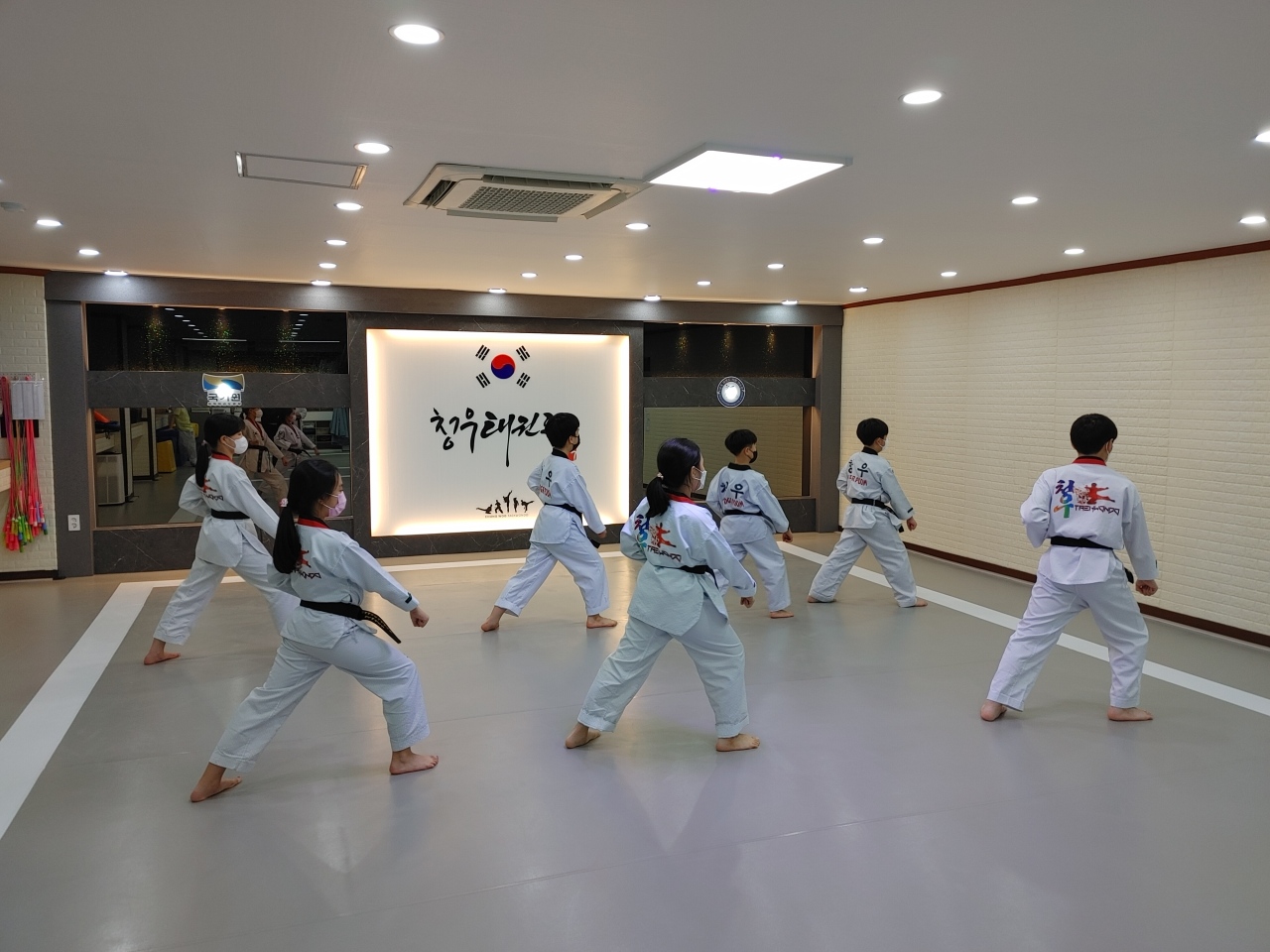 |
Students practice taekwondo at a class in Gyeonggi Province. (Chungwoo Taekwondo School) |
From school pickup and dropoff and supervised homework time to Hula-Hoop practice for gym class, taekwondo academies are playing an expanded role in South Korea.
On top of martial arts lessons, the centers -- a sure-fire find near practically any elementary school in South Korea -- provide much-needed help to two-paycheck couples struggling to juggle work and child-rearing responsibilities.
Five-year-old Kwon Ye-rin’s after-kindergarten routine hinges on a taekwondo academy, although she joins class there only two days a week. Every day she is collected at the kindergarten by a taekwondo instructor, along with many other kids, and is driven to a nearby building in a yellow minivan where the taekwondo gym and other private educational institutions, or hagwon, are located.
For the three days Kwon doesn’t take taekwondo lessons, the instructor sends her to piano and ballet classes in the same building and picks her up afterward for another yellow bus ride home.
Kwon’s mother Kim Jae-young pays an extra monthly fee to the taekwondo academy for the additional service.
“Taekwondo hagwon is almost indispensable for working moms like me as they provide a shuttle bus service. Otherwise, parents have to deal with a very stressful task of mapping out the schedule for kids,” said the mother, who resides in Goyang, Gyeonggi Province.
The academy Kwon is attending is far from unique.
Taekwondo academies typically provide the “full service” option, picking up kids from kindergarten or school and dropping them off at home after class. Some even offer weekend excursions or birthday party services for an extra fee.
Such an expanded role is a part of their survival strategy.
Taekwondo, the centuries-old Korean martial arts characterized by punching and kicking techniques using bare feet and hands, has long been practiced by young students, chiefly elementary school boys.
But private academies teaching the sport have taken a toll from the shrinking number of elementary students as the country continues to have the lowest birthrate in the world.
With universities here producing more than 2,000 taekwondo instructors a year, competition has been heating up among academies to attract more students, expanding their student base to kindergartners.
As of last year, there were 10,298 private taekwondo academies across the country, according to data compiled by the Ministry of Culture, Sports and Tourism.
Kim Byung-ho, who has been running a taekwondo school for 17 years, said parents’ growing demand for an institution that can fill the child care void has affected the way he and other instructors run their institutions.
As more kindergarten students enroll in his academy, he has become more attentive to issues such as child transportation safety and environmental hormones.
“Parents wanted places and people they can entrust the care of their children to,” he said. “And they appear to have found taekwondo hagwon as an alternative.”
By Park Han-na (
hnpark@heraldcorp.com)







![[Today’s K-pop] Blackpink’s Jennie, Lisa invited to Coachella as solo acts](http://res.heraldm.com/phpwas/restmb_idxmake.php?idx=644&simg=/content/image/2024/11/21/20241121050099_0.jpg)
